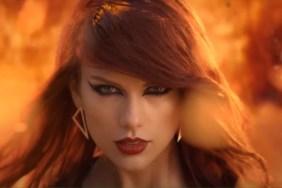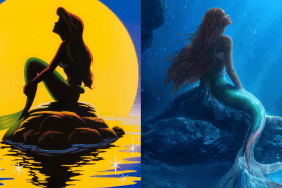
When the Oscar nominations were announced last month, one name jumped out for many watching the announcement, a small Spanish film called Chico & Rita, which was nominated in the Animated Feature Film category over far more expensive Hollywood CG-animated films.
The music-filled 2D-animated film is a collaboration between Spanish filmmaker and record producer Fernando Trueba (left) and award-winning designer and artist Javier Mariscal (right), the story of a piano player named Chico and a singer named Rita who meet in a passionate night in Havana, Cuba in the late ’40s. Over the course of the next few years, their relationship hits highs and lows as they both travel to New York and she becomes famous, while he struggles. It’s a gorgeous film that shows the rise of Cuban music in the United States and how black Cuban musicians struggled with racism despite America’s love for their music. More than anything, it’s a truly moving love story that makes you forget you’re watching an animated film.
Trueba was the director of the Oscar winning Spanish film Belle Epoque (called “The Age of Beauty” when released in the States), starring a younger Penelope Cruz, as well as the documentary Calle 54, which covered the Cuban music scene, so the film made sense for him, and the two of them had a third directing collaborator in Javier’s brother Tono Errando (center).
The idea for the film originated almost eight years ago, as ComingSoon.net learned when we sat down with the trio on a visit to New York City last week. We also got a good view of the playful and somewhat competitive relationship between Fernando and Javier that could only come about from decades of friendship and collaboration.
“I always loved (Javier’s) work, even when I was a student,” Trueba told us. “He’s five years older than me and he had already started publishing comics and painting, but when I did ‘Calle 54’ in 2000, I showed him a first cut of the movie because I had this dream of him making the poster for the movie. He saw the movie, he loved it, he did the poster for me, we became friends. I then started producing records with Bebo (Valdés, the film’s composer/arranger) and with some other people and I always asked Mariscol to do the art and the graphics. That’s how our friendship developed and we started to talk about working together on something bigger, not just the art of a movie or a record. We thought about the possibility of making an animation movie together and then one day at his studio, they had made a music video and they showed it to me, and I saw his drawings of the streets of Havana, very simple, because it was a very small film but the drawings were beautiful. I told him, ‘Why don’t we do a movie in Cuba?’ That’s how we started and then we had to come up with an idea.”
Mariscol jumped in with how that initial idea evolved. “First, we wanted to do a love story, an animated film for adults, and a story of two Cuban musicians in the ’40s and ’50s, then we decided to do Havana and New York, because this is another love story with two cities, then after that, we started writing and writing.”

Although it was Tuenda who wanted to set the story in Cuba, it was Mariscol who wanted there to be music, so they decided to make the characters musicians, which would make it impossible not to have music as the film’s base.
“When I was born, I started singing boleros, the love songs from Cuba but also from Mexico and from Peru and Spain, so it’s like Latino literature,” he told us about how his love for Cuban music and culture came about. “Cuba is very, very close to us. Havana in the ’50s was nothing to do with Bacelona or Madrid. It was a real big city like New York and so explosive with everything.”
“At the time it was richer than Spain,” his filmmaking partner continued. “Spain had been the empire and Cuba the colony, but in one moment, the colony was richer and stronger than the metropolis and much of the Spanish politics was made in Cuba. They changed the Spanish government. The Spanish that emigrated in the 19th and 20th Century to Cuba, they left a Catholic repressive country, and they arrived to a sunny place, sensual, free, where it was like freedom. Spaniards who arrived there didn’t want to come back.”
“It was very important to have this (music),” Mariscol said. “It’s not a musical but the music is so important to give you the feeling. With animation, you’re always working with music and sound is so important. When I make animation, I need the music to cut to, and we have the best producer of music in the world in Fernando Tuenda.”
“At the time of writing, I started thinking about the music because it was part of the story, and in many versions of the script, music was already part of it,” the award-winning music producer added. “At the same time, Javier started very intense research and Tono and I watched every documentary and fiction movies, read every book, looked at every photograph and we went there and he made thousands of photographs, and they found archives from a nun lost in Cuba where we found photographs of the streets in ’48.”
Besides being Javier’s brother, Tono Errando is in charge of the audio-visual department of Studio Mariscol, and he told us that they had dreamed of making a feature film after doing various shorts and a cartoon for European television. They ended up with roughly 300 animators, which isn’t a lot for an animated film, but probably the absolute minimum needed for a production on the scale of Chico & Rita.
“To make an animated film is always a huge thing,” Errando stated. “You have to generate every single picture and an hour and a half is a lot of pictures and you have to draw all of them and that’s a lot of work for a lot of people.”
Mariscol spoke a bit about why they decided to make an animated film for adults. “We want to open a new window for animation and we think it’s not a good idea to only have animation for children. Animation is a fantastic system to explain a lot of things, and also you have a lot of possibilities and every year, more and more and more, because every year it becomes easier for young people to make graphic animation. So why did Hollywood decide that animation is just for children? Culturally, it’s very difficult for us to go to the audience because they say, ‘But it’s not for kids, what is this?'”

Fernando concurred. “What is going on in graphic novels in the last few years, they’ve become more complex,” he said. “When Javier’s friend Art Spiegelman got the Pulitzer for ‘Maus,’ that means something. It means that graphic comics have grown up. Animation movies are growing up now and it’s a new thing, but at the same time, it’s gonna grow, and there will be more movies like this and more complicated.”
Of course, we had to ask them about the Oscar nomination, which was a surprise for everyone, mainly because Chico & Rita hadn’t really played that much in the States. “We are very surprised,” Mariscol responded. “For me especially, America always gives me surprises. I never thought in my life that an indie movie, a European movie, an animation for adults, and a Cuban musical in 2D with a small budget. What is this, man? ‘Tintin’ is fantastic, it’s ‘Wow!!” It cost millions of dollars, fantastic movie with explosions. When you see an American movie, you feel like a little boat against these big cruise ships to the Caribbean. Sometimes it happens because here there’s democracy and it’s a fantastic country of opportunities.”
“I try not to think about it,” Fernando admitted. “We’re already happy, because for us to be nominated is already a big award for us.”
“We’ve gotten a lot of awards but this is like a competition that we’re not racing,” Errando agreed. “We’re making films and to compare one film to another is always something really difficult, because each one is completely different from the other, so to make a competition out of that, is really strange and when you get the award, you always wonder how the other guys feel about it. It’s not like someone is saying ‘This is good and this is not’ but journalists sometimes do that and it’s hard.”
Fernando’s Oscar-winning Foreign Language film Belle Epoque, was thought to be an underdog in the 1994 Oscar race, but none other than the late Billy Wilder told Fernando his film was going to beat the popular favorite Farewell My Concubine, and sure enough, it did!Chico & Rita is even more of an underdog as it takes on giant Hollywood blockbusters with much more money to promote them but as much as we loved Rango, we wouldn’t be even remotely surprised or disappointed if Chico & Rita pulls out a similar surprise upset.
Chico & Rita has opened in New York City at the Angelika Film Center, but it expands to San Francisco, San Jose, Berkeley and other cities tomorrow and even more in the coming weeks. You can find out when it’s playing in your area by “like”-ing the Chico & Rita Facebook Page. There’s also a hardcover graphic novel version of the story published by Harry N. Abrams and an original soundtrack available on CD.









